Progressive Die Stamping
Progressive Die Stamping
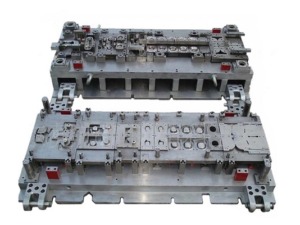
As a professional Metal Stamping Parts Manufacturer,we offer high quality Progressive Die Stamping services at low cost with professional technology.
Progressive die stamping is one of metal forming methods widely used to manufacture stamping parts for various industries, for example, automotive, electronics, household appliances and lighting.
Progressive stamping consists of many individual stroke, each of them performs different operation on the part. The part is carried smoothly in the tooling from one stroke to another station by the scrap strip and is cut off from the scrap strip in the final stroke.
How to know if your stamping parts can be made by compound die stamping or progressive stamping? It is simply depended on the size, complexity and volume of your stamping parts. Progressive stamping is widely used to produce large number of small-sized parts and keep the production costs at the lowest with high productivity, the highest requirement in precision and stability will be fulfilled.
Progressive Die Stamping Feature
- It is a multi-step die for continuous punching, which can complete blanking and bending in one set of die. Forming, drawing and other processes. The production process is equivalent to punching one production or process part per stroke, so it has a higher productivity than the composite die and is suitable for mass production.
- It can reduce the number of equipment and dies, reduce the floor space of the workshop, and save the semi-finished product transportation and storage warehouse.
- With coil or strip, the stage feed die can realize automatic feeding, automatic discharging, automatic lamination and other functions, so as to realize the automation of stamping production.
- Progressive die processes can be dispersed and do not need to be concentrated in one station, so the problem of “minimum wall thickness” of composite die can be solved, and the die strength is high and the service life is long.
- The stage feed die is an automatic punch die, which mostly uses coils. It adopts automatic feeding, and manual operation is not required in the punching process. Therefore, it is unnecessary for hands to enter the dangerous area, and it has the characteristics of safe operation.
- Most of the fabricated parts and wastes produced by the progressive die leak downward, so high-speed press machine can be used for production.
- The structure of the progressive die is complex, the manufacturing accuracy is high, the cycle is long, the cost is high and the maintenance is difficult.
- The progressive die is generally used for the processing of small parts with large production batch, high precision requirements and requiring multi-process blanking.
Classification of multi-station progressive die
1. Classified according to the nature and order of stamping process
- Blanking progressive die.
- Shear progressive die.
- Blanking and bending progressive die.
- Blanking and drawing progressive die.
- Blanking and forming progressive die.
- Blanking, bending and drawing progressive die.
- Blanking, bending and forming progressive die.
- Blanking, drawing and forming progressive die.
- Blanking, bending, drawing and forming progressive die.
2. Classified according to different layout methods
It can be divided into closed hole continuous progressive die and segmented cutting multi-stage progressive die according to different arrangement modes.
- Closed hole continuous progressive die. The working holes (except the fixed-distance side cutting edge holes) of the progressive die are consistent with the shapes of the holes and the shapes of the finished parts (the bent parts refer to the expanded shapes), and they are respectively set on a certain station. The materials are continuously punched along the stations to obtain the required finished parts.
- Split cut multi-stage progressive die. This kind of progressive die is used to cut off the excessive waste in sections for the complex irregular holes of the stamping parts and the whole shape of the parts. That is to cut off a part of the waste materials in the previous station, and then cut off a part of the waste materials in the later station. A complete manufactured part or semi-finished product can be obtained through continuous punching in the gradual station.
3. Classified by number of work places+name of fabricated parts
The main categories are: 22 station plasma TV connection bracket progressive die, 32 station brush bracket precision progressive die, 52 station Terminal block progressive die, etc.
4. Classified according to the name of the stamped workpiece
For example: 28L integrated circuit lead frame progressive die, left and right brackets progressive die of fax machine, dynamic spring multi-station progressive die, terminal connection Sheet multi-station progressive die, etc., these multi-station progressive dies are mostly used at present.
5. Classified by die structure
Divided into independent progressive die and segmented assembly progressive die according to the structure of die. Independent (also known as integral) progressive die, regardless of the number of stations, all stations are completed on the same concave die; Sectional assembly type progressive die, according to the characteristics of the laying-off punching process, the same or similar punching properties of the station form an independent progressive die unit, and then it is fixed to the master die frame, become a complete set of multi-station progressive die. Sectional assembly progressive die simplifies the difficulty of die making, so it is commonly used in large-scale, multi-station and difficult processing progressive die.
6. Classified according to Die use characteristics
Mainly including automatic stop pin stage feeding die, stage feeding die with fixed distance cutting device, automatic feeding punching segmented punching stage feeding die, pneumatic feeding device punching stage feeding die, etc.
Progressive Die Stamping Manufacturer
| Material | Steel, Stainless steel, Copper,Brass,Aluminum,Zinc… |
| Weight range | 0.10-20 kg |
| Manufacture Process | 1) Process: Metal Stamping, deep Drawing, Blanking,Forming, Welding, Bending, Grilling, Plastic injection, ect. 2)Secondary Machining: CNC turning, milling, drilling, grinding, assembly to packing 3) Surface Finish: Per customer required |
| Surface Treatment | 1) Sand blasting 2) Zinc/chrome plating 3) Powder coating 4) Anodizing. etc |
| Production usage | 1) machinery parts 2) mining equipment 3) pump parts 4) auto & motorcycle parts 5) tool parts etc. |
Progressive Die Manufacturing Capacity
Progressive Stamping Die Design Capacity
- Sheet metal finite element analysis capability;
- 3 D and 2 D design capability;
- 10 mould design engineers;
- 20 years mould design experience;
- 15 – 30 days fast mould delivery;
- Mold manufacturing capacity: 50set/Month
Stamping Capacity
- 30T-500T Punching machine 25 sets;
- Product minimum size to 5mm, maximum size to
- 1000mm processing capacity
- Servo Press Machine;
- Material: Steel, Stainless steel, Aluminum, Copper,Brass, Kovar etc.;
- Stamping capacity: 15000000shot/Month
Quality Control Capacity
- Full-time quality control personnel;
- Mitoyo three coordinate measuring instrument,Keyence height 3D profilometer, TESA altimeter
and other high-precision measuring equipment; - IS9002 quality management system certification;
- With PDCA and 5W1H good work habits.;
- Inspection report and SGS report are provided for each product.
Packaging & Shipping
Packaging Details: Carton + pallet or Plywood cases or Other package as per customer requirement
Delivery Details: 6 weeks for samples, 4 weeks for mass production
More details to be discussed with us.it depends on your order quantity and project complexity.
What we offer
•Professional manufacturer customized metal products,one stop source for new project developing.
•Quick response to all your inquiry
•Free samples can be provided
•Custom logo stamping,OEM/ODM Progressive Die Stamping Service
•Strict inspection procedures to guarantee the good quality of each shipment
•Fast delivery and competitive price

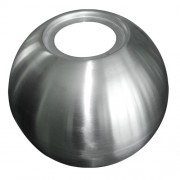
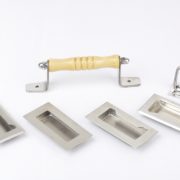


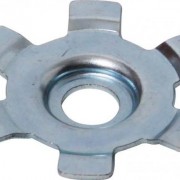
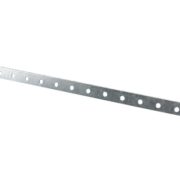


Trackbacks & Pingbacks
[…] Cutting, Precision Stamping, Progressive die stamping,CNC Bending, CNC Milling, CNC Turning, Threading, Riveting, Drilling, CNC Punching, Die Casting, […]
Comments are closed.